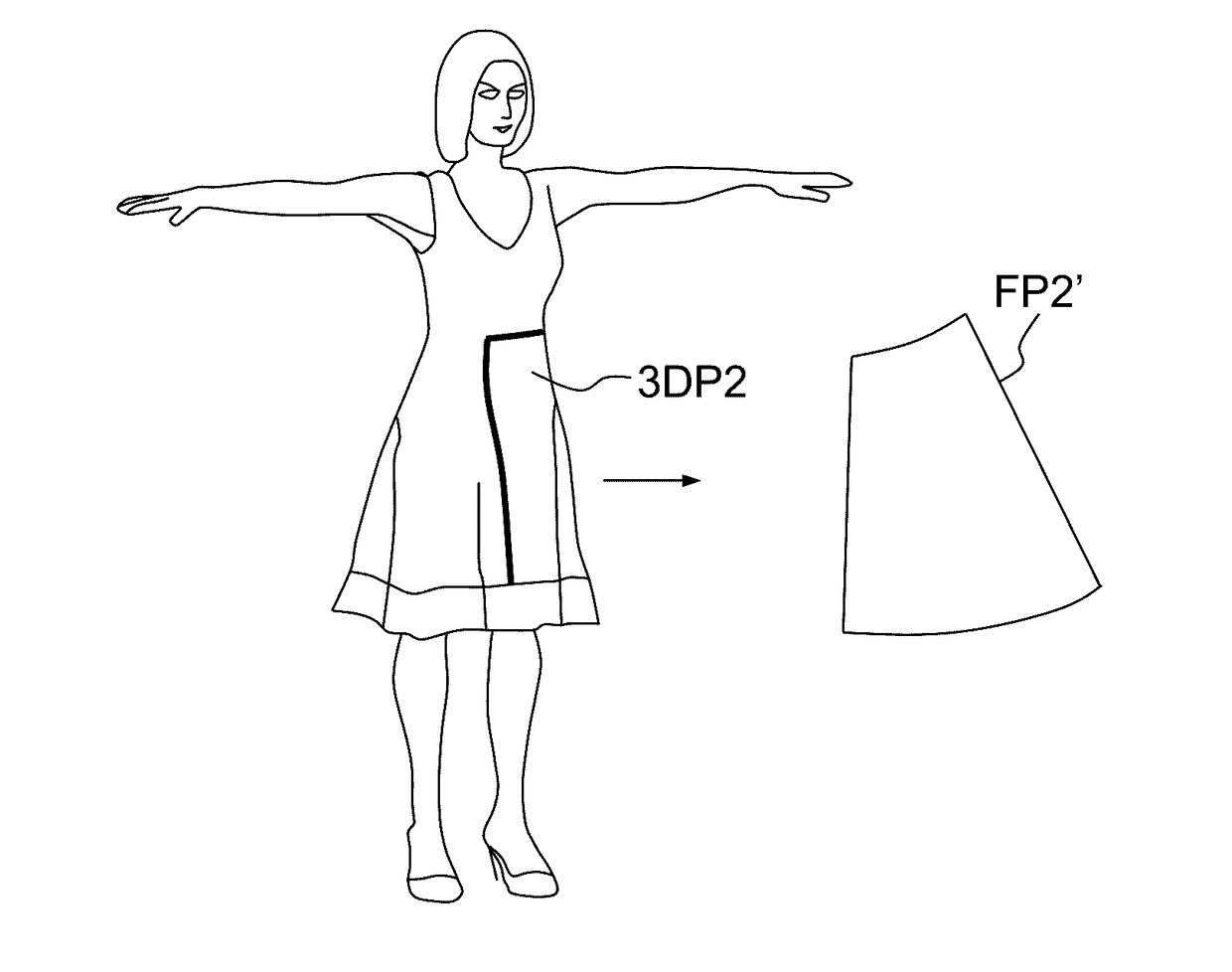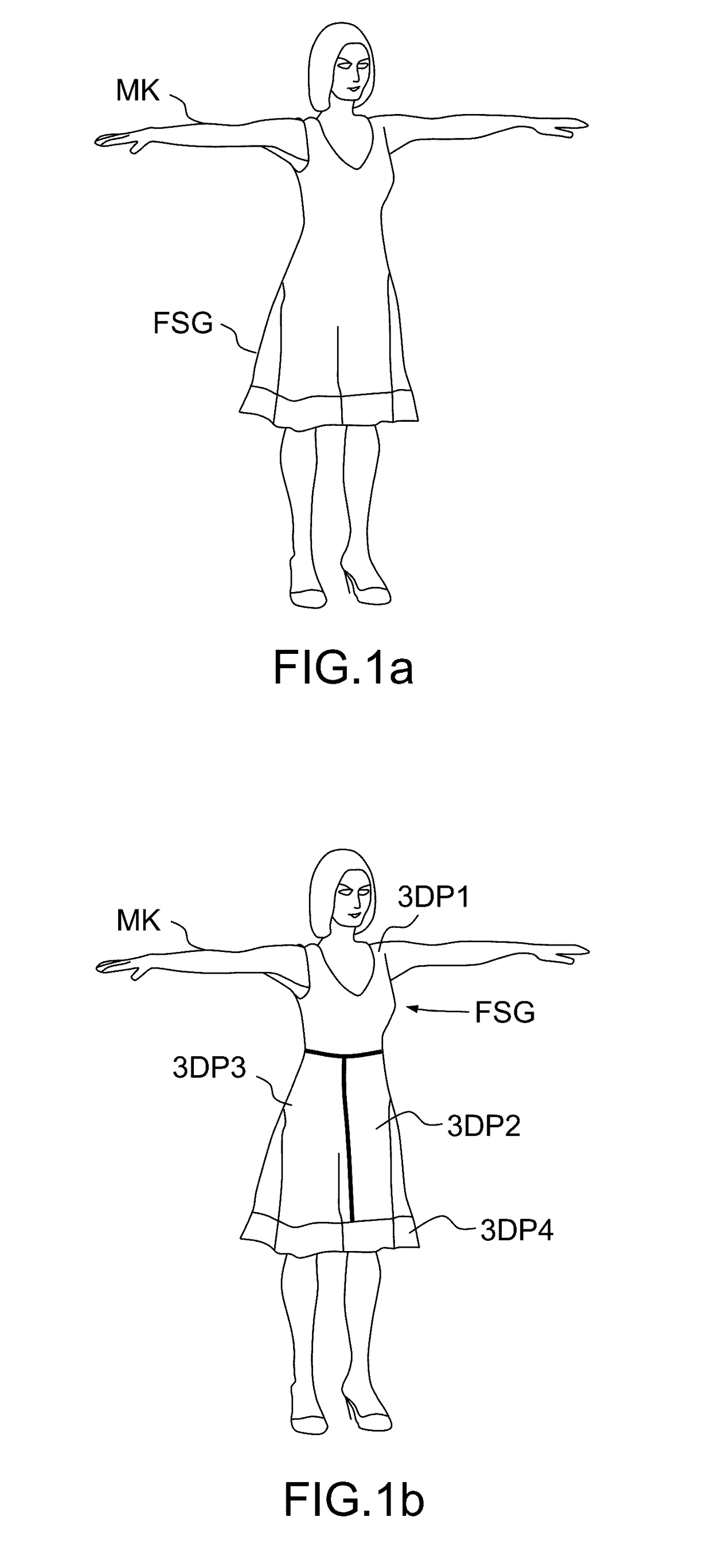Computer-Implemented Method For Designing A Manufacturable Garment
- Summary
- Abstract
- Description
- Claims
- Application Information
AI Technical Summary
Benefits of technology
Problems solved by technology
Method used
Image
Examples
Embodiment Construction
[0048]A description of example embodiments of the invention follows.
[0049]As illustrated on FIGS. 1a, 1b and 2, the inventive method begins (step a, sub-step al on the flow-chart of FIG. 2) by providing to a CAD system a digitally modeled 3D shape FSG representing a garment. The shape is “free”, i.e. it needs not being constrained by any specific manufacturability requirement. The shape can be sketched by the user on a suitable avatar, or digitally-modeled 3D manikin MK, using e.g. one of the techniques described in the above-referenced papers of Zahraa Yasseen et al, Emmanuel Turquin et al, Yu-lei Geng et al. Alternatively it may be imported together with a manikin “wearing” it—from a database or any other source.
[0050]The free 3D shape FSG may be already segmented, or not. In the latter case, there are two possibilities: the user may be prompted to perform the segmentation manually, by using suitable interactive graphic tools (known per se); or the CAD system may perform the segme...
PUM
 Login to View More
Login to View More Abstract
Description
Claims
Application Information
 Login to View More
Login to View More - R&D
- Intellectual Property
- Life Sciences
- Materials
- Tech Scout
- Unparalleled Data Quality
- Higher Quality Content
- 60% Fewer Hallucinations
Browse by: Latest US Patents, China's latest patents, Technical Efficacy Thesaurus, Application Domain, Technology Topic, Popular Technical Reports.
© 2025 PatSnap. All rights reserved.Legal|Privacy policy|Modern Slavery Act Transparency Statement|Sitemap|About US| Contact US: help@patsnap.com



